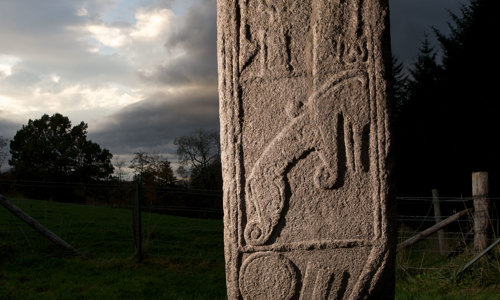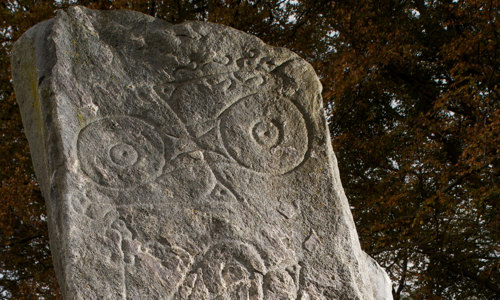History
Enigmas in stone
We do not know why the Picts carved and erected the 300 stones scattered about Scotland. The earliest examples, such as the Brandsbutt Stone, probably date to about AD 600, though it is notoriously difficult to date them precisely.
These stones have symbols carved directly into the stone. They may have been intended as:
- memorials to warriors
- boundary markers between tribes
- representations of allegiances
Pictish stone carvers were certainly skilled craftspeople creating real works of art – take a look at the detail on the serpent on the Brandsbutt Stone.
Other Pictish stones, probably dating after AD 700, are perhaps less mysterious. On these stones, the Christian cross dominates the traditional symbols. They were mostly used as:
- grave markers
- grave covers
- aids to worship
The Brandsbutt Stone was probably part of a prehistoric stone circle before it was reused as a symbol stone. The Picts, particularly in north-eastern Scotland, often repurposed prehistoric sites to create spaces probably used for ritual activities.
Alphabetical import
Rising up the left-hand side of the Brandsbutt Stone is an inscription in Ogham, an Irish alphabet of straight lines, which was adopted by the Picts. It has been interpreted as reading ‘IRATADDOARENS’ – possibly a personal name.
More than 30 ogham inscriptions have been found in regions occupied by the Picts, dating to between AD 500 and 1000. The presence of Ogham inscriptions provide important evidence for the nature and extent of early literacy in Scotland. They’re particularly useful for examining the relationship between Pictish and Gaelic.











